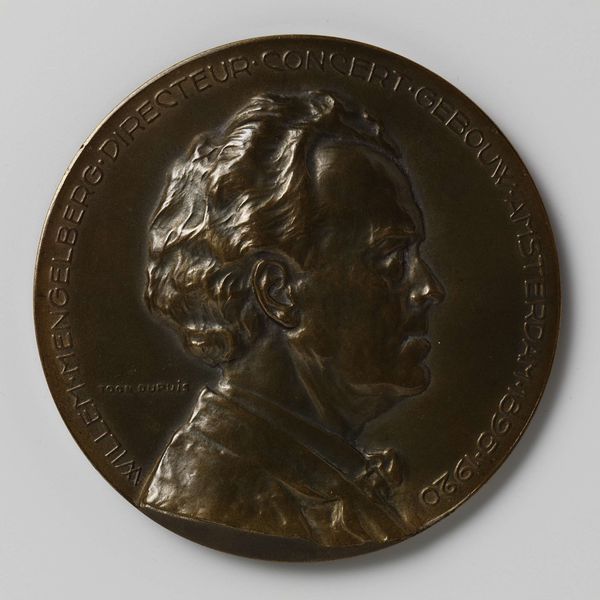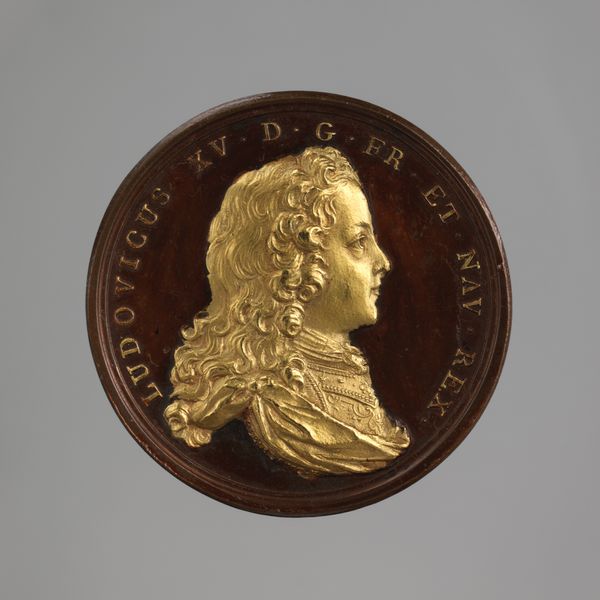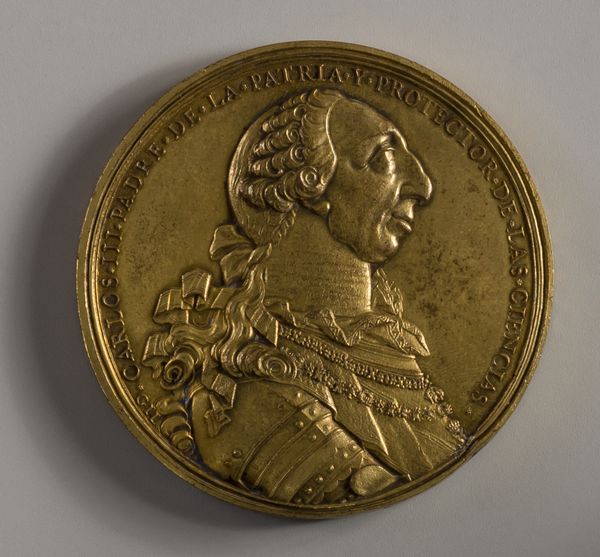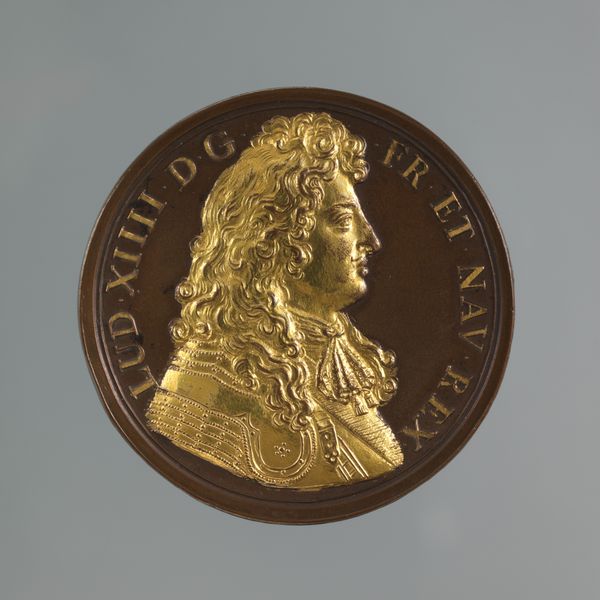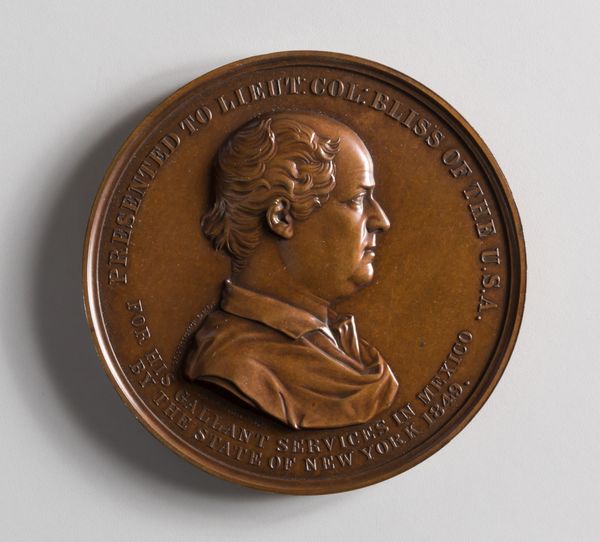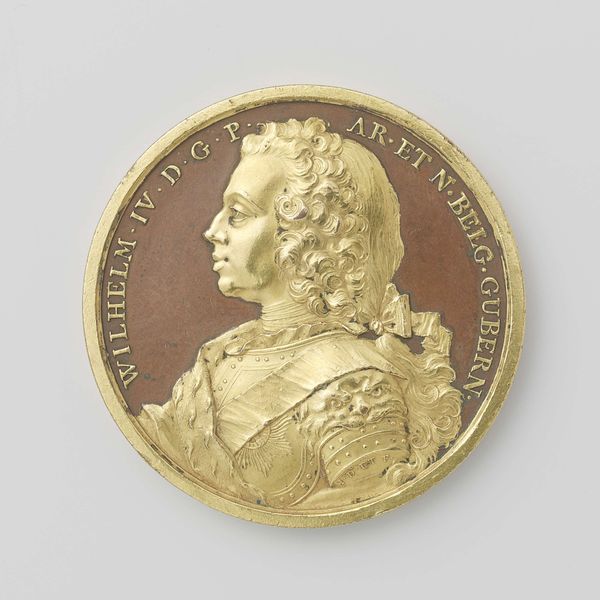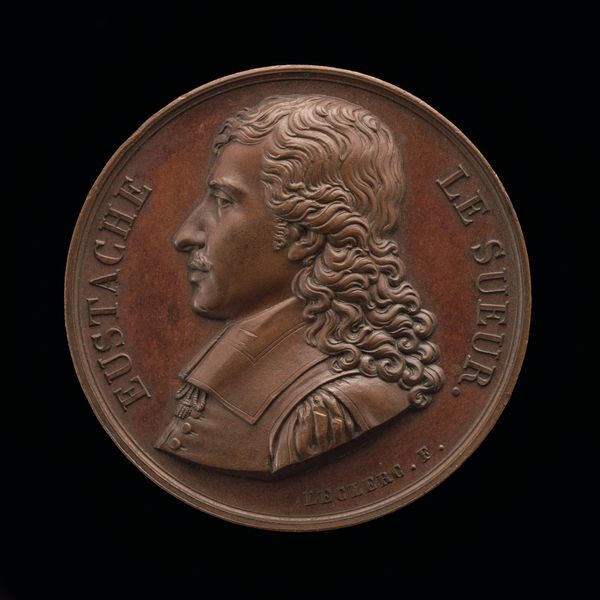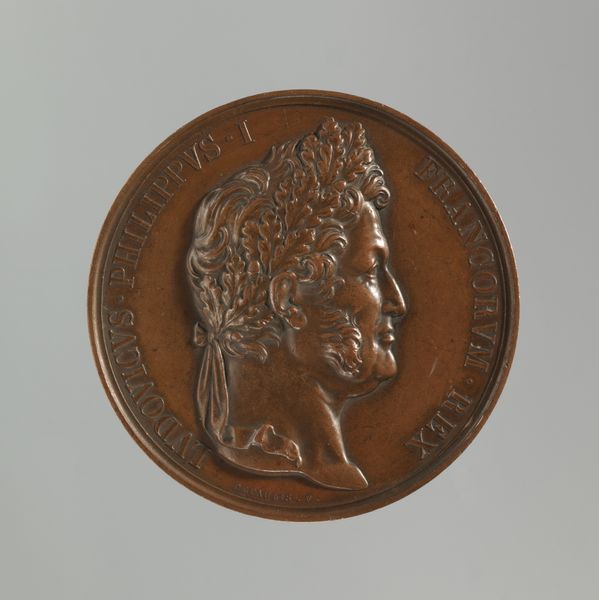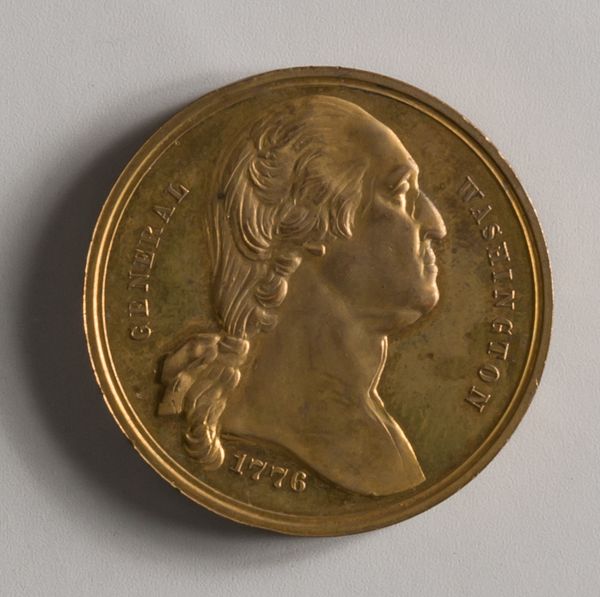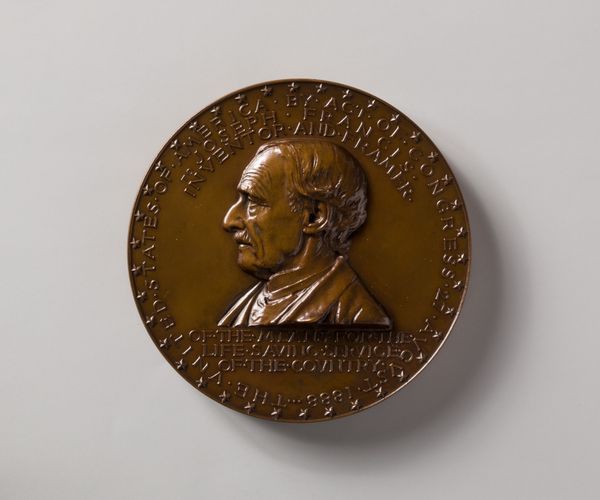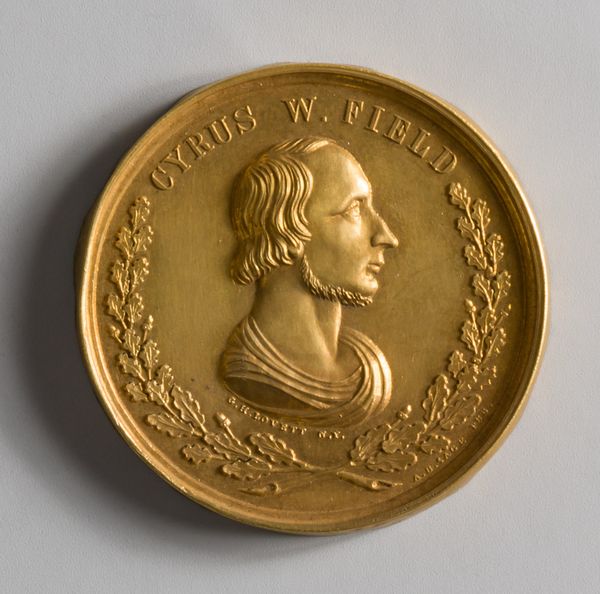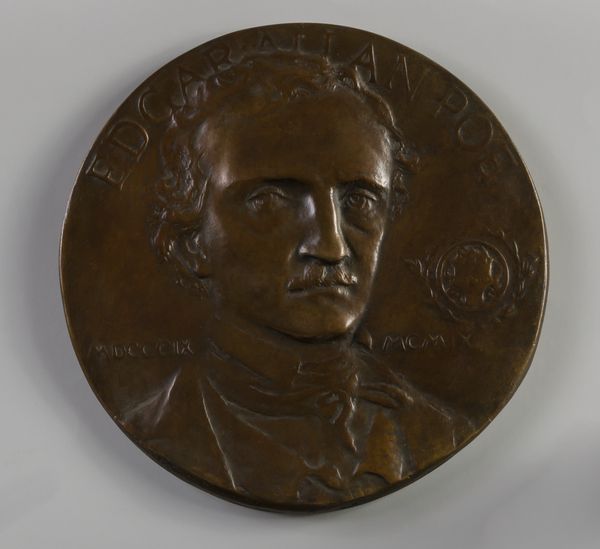
Victories of Maurice de Saxe, Marshal General of France 1747
0:00
0:00
metal, relief, bronze, sculpture
#
portrait
#
medal
#
baroque
#
metal
#
sculpture
#
relief
#
bronze
#
sculpture
#
history-painting
#
decorative-art
Dimensions: Confirmed: 3/16 × 2 1/8 in. (0.5 × 5.4 cm)
Copyright: Public Domain
Editor: Here we have Jean Dassier’s 1747 bronze medal, "Victories of Maurice de Saxe, Marshal General of France". It's quite striking how the light plays on the relief, highlighting the profile of the subject. What stories do you see embedded in this piece? Curator: Beyond the celebration of military victory, I see a powerful statement about the construction of masculinity in 18th-century Europe. Consider the armor, the idealized profile, and even the inscription itself. It all points to a deliberate crafting of identity meant to project authority and strength. But who is this for, and at what cost? Editor: That's fascinating. So, you're saying it's less about an actual representation of the man and more about projecting a certain image? Curator: Exactly! Think about how portraiture, particularly of powerful figures, often serves as a form of propaganda. How does the piece perpetuate a system where only certain bodies and certain narratives are valorized? Also, let's consider the bronze material itself; a classical allusion meant to connect Maurice de Saxe with a legacy of imperial power. Editor: I hadn't considered the implications of the bronze and its connection to this classical idea. It makes me wonder about the accessibility of this type of imagery. Who was meant to consume it? Curator: That’s key. These medals were often distributed among elites, reinforcing a network of power and patronage. It’s a physical manifestation of privilege, a way to solidify social hierarchies. How might we challenge that narrative today? Editor: I'm now looking at it with a much more critical eye, thinking about power structures and the intentional construction of historical narratives. Thank you! Curator: Absolutely. It's about understanding how even seemingly simple objects can reveal complex social and political dynamics, inviting us to question whose stories are being told, and whose are being left out.
Comments
No comments
Be the first to comment and join the conversation on the ultimate creative platform.
